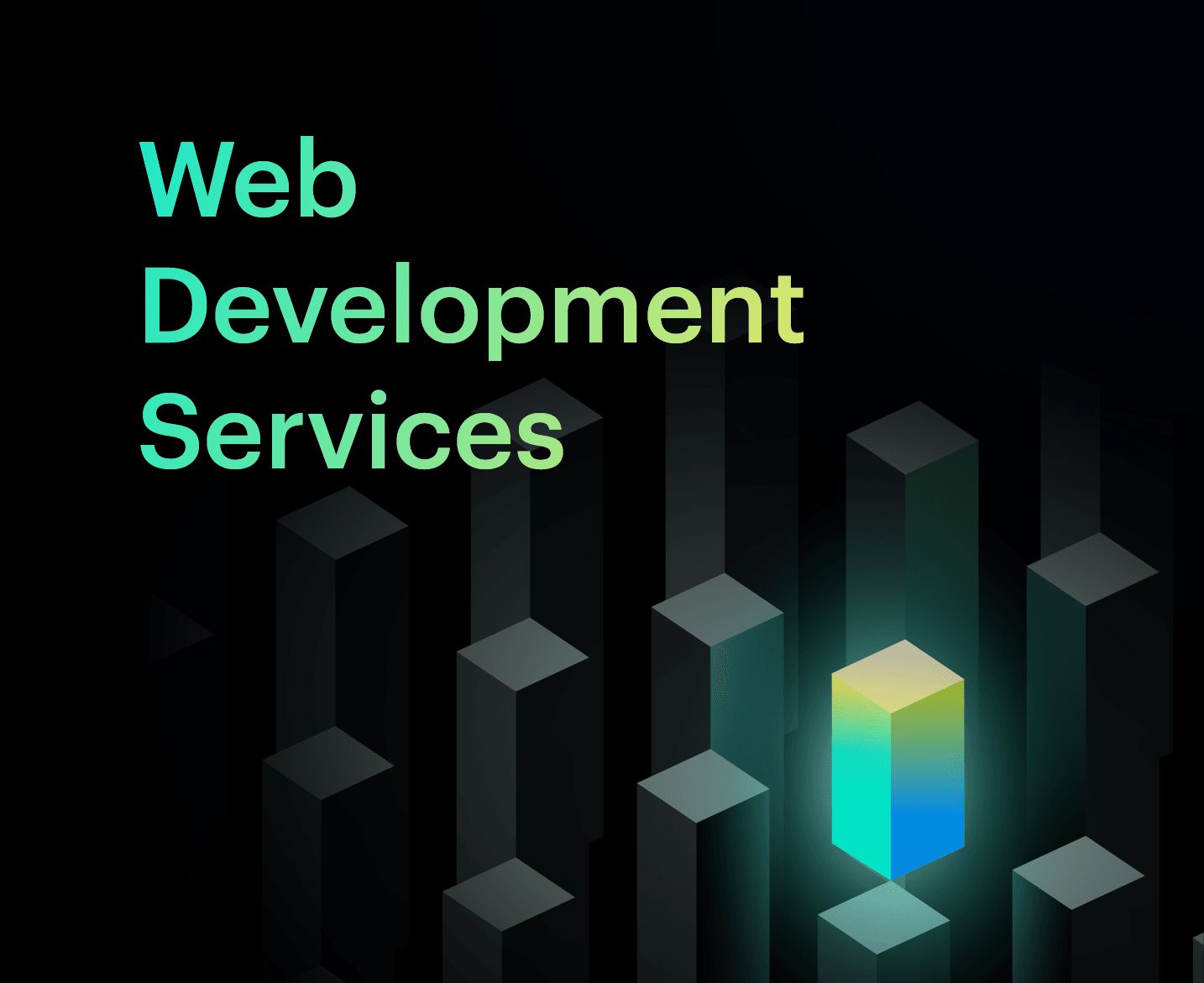Best 15 Node.js Frameworks for App Development

- What Is Node.js?
- Is Node.js a Framework?
- What Are the Different Types of Node JS Frameworks?
- What Is Node JS Framework Used For?
- General Features of Node JS Frameworks
- Best 15 NodeJS Frameworks to Choose in 2025
- How to Choose the Best Node.js Framework?
- Node.js Development Services and Choosing the Right Framework
- Node.js Microservices and Cross-Platform App Development
- Final Thoughts
- What Is Node.js?
- Is Node.js a Framework?
- What Are the Different Types of Node JS Frameworks?
- What Is Node JS Framework Used For?
- General Features of Node JS Frameworks
- Best 15 NodeJS Frameworks to Choose in 2025
- How to Choose the Best Node.js Framework?
- Node.js Development Services and Choosing the Right Framework
- Node.js Microservices and Cross-Platform App Development
- Final Thoughts
Node.js has emerged as a leading platform for scalable network applications using JavaScript. Its event-driven, non-blocking I/O model simplifies the development of fast and efficient web apps, APIs, real-time services, and microservices. The ecosystem boasts several frameworks and libraries, streamlining full-stack development.
This blog explores the top Node.js frameworks in 2025, widely adopted by companies and developers for building high-performance backend services, web servers, REST APIs, real-time apps, and full-stack JavaScript applications.
What Is Node.js?
Node.js, introduced in 2009, is a cross-platform, open-source JavaScript runtime environment enabling server-side execution of JavaScript. Utilising an event-driven, non-blocking I/O model and powered by Chrome's V8 engine, Node.js is lightweight and efficient. Its core modules, such as HTTP, DNS, and FS, simplify file and network operations. Node.js allows developers to use a single language (JS) across the full stack.
Node JS frameworks complement Node.js by providing essential features for building robust applications. These frameworks, written in JavaScript, run within the Node.js environment, offering benefits such as easy request routing, built-in security, templating support, and database integration helpers. By streamlining the development process, Node JS frameworks empower developers to focus on app logic, avoiding repetitive rebuilding of core infrastructure.
Is Node.js a Framework?
No, Node.js is not a framework. It is a runtime environment that allows developers to execute JavaScript on servers. Node.js provides a JavaScript environment on top of which frameworks can be built upon.
Some popular Node.js frameworks include Express.js, Sails.js, Hapi, Koa etc. These frameworks simplify the building of web applications and sites using Node.js. They provide helpful functionality and conventions on top of raw Node.js.
What Are the Different Types of Node JS Frameworks?
Node.js web frameworks can be grouped into three main categories: MVC frameworks, full-stack MVC frameworks, and REST API frameworks.
MVC Frameworks
MVC frameworks like Express.js follow the model-view-controller software design pattern to separate application logic into three parts for easier maintenance and scaling. The model represents the data and business logic, the view handles presentation and UI, and the controller manages interactions and flows between the two.
Full-Stack MVC
Full-stack MVC Node JS frameworks offer comprehensive tools and capabilities that cover both the frontend and backend aspects of web development. They provide scaffolding, libraries, template engines and other features tailored for building real-time, dynamic applications.
REST API Focused
REST API-focused frameworks optimise for rapidly developing internet-connected apps with established REST APIs. This enables seamless integration without extensive architectural overhead, allowing developers to build out the backend and connect to frontends swiftly.
What Is Node JS Framework Used For?
Here are some of the top reasons to use a Node.js framework:
- Simpler Web Server: A Node.js server on its own has no native routing capabilities. Frameworks provide easy APIs to map app routes, middlewares etc.
- Reduce Boilerplate Code: Useful abstractions that help reuse code and follow best practices for the organisation.
- Built-in Security Features: Protection against common web app attacks like CSRF, XSS, Parameter Tampering etc.
- Active Open Source: Regular updates and fixes from large developer communities committed to the project.
- Wider Feature Set: Caching, request validation, localisation, template engine - features that accelerate app development.
- An Ecosystem of Libraries: 1000s of complementary packages to further extend capabilities as per custom needs.
General Features of Node JS Frameworks
While Node frameworks have specific advantages based on their purpose and philosophy, most share some common and useful capabilities:
- Routing - Map app endpoints and REST API patterns easily
- Middleware and Modules - Extend with independent building blocks of code
- Database ORM/ODM - Simplifies data model and queries
- Templating Engine - Supports reuse of frontend markup code
- Data Validation - Automatic sanitisation and validation helpers
- Authentication and Authorisation - User login, access control and roles
- Event Listeners - Useful triggers across the lifecycle of an application
- Asset Bundling - Optimisation of JS, and CSS assets
- Internationalisation - Multi-language and localisation support
These shared general-purpose features allow developers to start new apps faster without reinventing the wheel.
Best 15 NodeJS Frameworks to Choose in 2025
Now let's look at some of the leading and most widely used Node.js frameworks:
Express.js
Express.js is the cornerstone of Node.js web frameworks, renowned for its simplicity and ease of use. It provides robust routing, middleware capabilities, and seamless migration options for apps from other platforms. Express.js boasts an extensive ecosystem with support for over 1400 add-ons via middleware. While it excels in building regular web and mobile apps swiftly, managing boilerplate code can be tedious for complex cases. Express.js is the most widely used node framework.
| Advantages of Express.js | Disadvantages of Express.js |
|---|---|
| Simplicity and ease of use | Managing boilerplate code can be tedious |
| Robust routing | Less suited for complex cases |
| Extensibility with 1400+ addons via middleware | Potential learning curve for beginners |
| Vast community support | Limited built-in features |
| Adoption by major companies | Stiff competition from other frameworks |
Use When:
- To quickly build regular web and mobile apps.
- Migrating apps from Django, Rails, etc.
Companies Using:
- Uber
- PayPal
- IBM
- Netflix
- Oracle
NestJS
NestJS, utilising expressive OOP patterns, is a Node.js framework fully supporting TypeScript. It offers a structured development approach similar to Angular, making it ideal for highly scalable server-side applications. Despite being relatively new with a smaller community, NestJS excels in integration flexibility and has gained adoption from companies like Adidas, Drift, Philips, and OpenClassrooms.
| Advantages of NestJS | Disadvantages of NestJS |
|---|---|
| Expressive OOP pattern | Relatively new with a smaller community |
| Full TypeScript support | Potential learning curve |
| Integration flexibility | Limited maturity and stability |
| Structured development approach | Dependency on TypeScript |
| Growing adoption by companies | May lack some advanced features |
Use When:
Highly scalable server-side apps with an Angular-like structure.
Companies Using:
- Adidas
- Drift
- Philips
- OpenClassrooms
Koa.js
Koa.js represents the next generation of Node.js frameworks, leveraging async/await for cleaner code and providing a small footprint with an elegant middleware flow. It focuses on better error handling through ES6+ support, making it suitable for building progressive next-gen Node applications. While it's relatively young and may have stabilisation issues, Koa.js has gained adoption by several companies.
| Advantages of Koa.js | Disadvantages of Koa.js |
|---|---|
| Async/await for cleaner code | Relatively young with stabilisation issues |
| Small footprint with elegant middleware flow | Limited maturity and ecosystem |
| Better error handling | May require additional features via middleware |
| ES6+ support for modern development | Potential learning curve for beginners |
| Active adoption by companies | Limited community support for troubleshooting issues |
Use When:
Building progressive next-gen Node applications with ES6+ support.
Companies Using:
- Algolia
- Tapad
- BugSnag
- YLD
Sails.js
Sails.js is an MVC framework that facilitates rapid prototyping with auto-generated APIs and supports websockets for real-time communication. With a very organised structure out of the box, Sails.js is ideal for working solo or achieving fast full-stack development. While it offers rapid development, documentation improvements are needed, and it may lack some advanced features.
| Advantages of Sails.js | Disadvantages of Sails.js |
|---|---|
| MVC patterns for organisations | Documentation improvement is needed |
| Rapid prototyping with auto-generated APIs | May lack some advanced features |
| Websockets support real-time communication | Dependency on built-in generators |
| Very organised structure out of the box | Potential learning curve for beginners |
| Efficient HTTP handling and streamlined development process | Stiff competition in the framework landscape |
Use When:
Ideal for working solo or achieving fast full-stack development.
Companies Using:
- GE
- Cisco
- NBC
- Oracle
- Uber
Hapi
Hapi stands out with a strong configuration foundation, a building block approach, and a focus on input validation. It is great for lean yet robust and enterprise-grade applications. However, it comes with a steep learning curve for some developers and is not a battery-included system. It's best suited for highly scalable and fault-tolerant backend services and JSON APIs.
| Advantages of Hapi | Disadvantages of Hapi |
|---|---|
| Strong configuration foundation | The steep learning curve for some developers |
| Building block approach for flexibility | Not a battery-included system |
| Input validation for reliability | Dependency on external modules for some features |
| Scalability and fault tolerance focus | May lack certain convenience features |
| Enterprise-grade application development | A potential challenge for beginners |
Use When:
Highly scalable and fault-tolerant backend services & JSON APIs.
Companies Using:
- Mailchimp
- Walmart
- Disney
- Instacart
Meteor
Meteor is a full-stack framework designed for rapid prototyping and MVP development, offering shared code between the client and server. While efficient for such purposes, it may not be the most suitable choice for complex and highly structured applications.
| Advantages of Meteor | Disadvantages of Meteor |
|---|---|
| Rapid full-stack prototyping and MVPs | Not ideal for complex and structured applications |
| Shared code between client and server | Limited customisation in some areas |
| Efficient for small to medium projects | May face scalability challenges with large projects |
| The easy learning curve for beginners | The potential learning curve for advanced features |
| Great for real-time applications | Limited scalability potential for larger projects |
Use When:
Rapid full-stack prototyping and MVPs.
Companies Using:
- Mazda
- Honeywell
- Socure
FeathersJS
FeathersJS is an open-source framework tailored for building REST APIs and real-time apps with a focus on speed. It excels in quickly developing chat and real-time application backends.
| Advantages of FeathersJS | Disadvantages of FeathersJS |
|---|---|
| Great for REST APIs and real-time apps | Not ideal for complex business logic |
| Easy development of chat functionality | Limited customisation in some areas |
| Active community support | May lack advanced features |
| Ease of getting started | The potential learning curve for some features |
| Well-documented features | Competition from more established frameworks |
Used When:
Building chat and real-time application backends.
Companies Using:
- Getty/AIGA
- Del
Socket.io
Socket.io facilitates real-time bidirectional communication between clients and servers via websockets. Known for its ease of use, it's ideal for adding real-time data sync capabilities to applications requiring fast messaging.
| Advantages of Socket.io | Disadvantages of Socket.io |
|---|---|
| Easy real-time bidirectional communication | Extra optimisations are needed for large concurrent connections |
| Active community support | Limited features compared to some frameworks |
| Great documentation for beginners | May face scalability challenges in certain scenarios |
| Compatibility across devices | Competition from more specialised tools |
| Versatile application in various domains | The potential learning curve for advanced features |
Use When:
Adding real-time data sync capabilities to apps requiring fast messaging.
Companies Using:
- Microsoft
- Trello
Fastify
Fastify is renowned for its blazing-fast performance, efficient memory usage, and strong support for TypeScript. It's an excellent choice for building high-performance APIs supporting thousands of concurrent connections. Fastify is the fastest web framework for NodeJS.
| Advantages of Fastify | Disadvantages of Fastify |
|---|---|
| Blazing fast performance | Still building its ecosystem compared to Express & Koa |
| Efficient memory usage | The potential learning curve for some developers |
| TypeScript support for type safety | Limited features compared to Express & Koa |
| Rapid API development | May face competition from larger ecosystems |
| Excellent reliability | May require additional modules for some features |
Use When:
Building high-performance mobile APIs supporting thousands of concurrent connections.
Companies Using:
- NearForm
- LetzDoIt
- ValueStream
Restify
Restify is a lean framework with low overhead, enforcing REST best practices and efficient handling of server workloads. While it may have fewer features than Express and Koa, it's steadily improving and is suitable for developing high-performance REST APIs.
| Advantages of Restify | Disadvantages of Restify |
|---|---|
| Lean and low overhead | Fewer features than Express, and Koa but improving |
| Enforces REST best practices | May lack some convenience features |
| Efficient for server workloads | Stiff competition from more comprehensive frameworks |
| Steady improvement in the feature set | Potential learning curve for beginners |
| Active community support | Dependency on external modules for certain features |
Use When:
Developing high-performance REST APIs that match modern standards.
Companies Using:
- GoDaddy
- Mozilla
- Modberry
LoopBack
LoopBack serves as an open-source API framework, offering a toolkit for the rapid creation of dynamic end-to-end REST APIs with minimal coding. It is praised for facilitating rapid backend CRUD services and external API development, although advanced customisations can introduce complexity.
| Advantages of LoopBack | Disadvantages of LoopBack |
|---|---|
| Rapid backend CRUD services | Advanced customisations can get complex |
| External API development with ease | May lack certain advanced features |
| Modular development approach | Dependency on LoopBack's built-in conventions |
| Ease of learning for beginners | Potential learning curve for advanced topics |
| Active community for support | Competition from more comprehensive frameworks |
Use When:
Rapidly building backend CRUD services and external APIs.
Companies Using:
- Symantec
- Linode
- Trainerize
AdonisJS
AdonisJS positions itself as a fully featured framework highly focused on developer ergonomics, stability, and confidence. Although it's gaining users, the community is still evolving, and it may lack some advanced features.
| Advantages of AdonisJS | Disadvantages of AdonisJS |
|---|---|
| Excellent documentation and code organisation | Still gaining traction with a smaller community |
| Developer ergonomics focus | May lack some advanced features |
| Clear code organisation for readability | Dependency on AdonisJs' conventions |
| Structured development approach | Potential learning curve for beginners |
| Growing user adoption | Competition from more established frameworks |
Use When:
Building server-side applications where stability and structure are critical.
Slim.js
Slim.js positions itself as a lightweight web framework with robust routing and a terse syntax. While excellent for clean and concise code, it may require custom building for complex cases.
| Advantages of Slim.js | Disadvantages of Slim.js |
|---|---|
| Lightweight web framework | Simplicity requires customisation for complex cases |
| Robust routing for efficient development | May lack some advanced features |
| The terse syntax for clean and concise code | Dependency on Slim.js' built-in conventions |
| Ideal for microservices and REST APIs | Potential learning curve for advanced topics |
| Used by recognisable companies | Competition from more feature-rich frameworks |
Use When:
Quickly building microservices, REST APIs, and web applications.
Companies Using:
- Red Ventures
- Creflo Dollar Ministries
Total.js
Total.js positions itself as a modular web application framework suitable for server or desktop deployment. With an inbuilt multi-process architecture, it prioritises efficient performance for scalable cloud-ready apps.
| Advantages of Total.js | Disadvantages of Total.js |
|---|---|
| Modular web application framework | Not beginner-friendly, examples are needed |
| Inbuilt multi-process architecture for enhanced performance | May lack some advanced features |
| Efficiently deploys scalable applications in cloud environments | Dependency on Total.js' conventions |
| Versatile deployment options on both servers and desktops | Potential learning curve for beginners |
| Adopted by startups across the Asia-Pacific region | Competition from more established frameworks |
Use When:
Building efficient and scalable cloud deployment-ready applications.
Companies Using:
- Adopted by startups across the Asia-Pacific region
Derby
Derby stands out as an MVC framework that facilitates real-time synchronisation of data across connected browsers and servers. While excellent for multi-user real-time collaboration apps, it may be overkill if such features are not required.
| Advantages of Derby | Disadvantages of Derby |
|---|---|
| Follows the MVC pattern, facilitating organised development | As a full-stack framework, it may be overkill without real-time features |
| Enables easy synchronisation of data across connected browsers | May lack some advanced features |
| Excellent for multi-user real-time collaboration applications | Dependency on Derby's conventions |
| Ideal for applications in chat, audio, and video platforms | Potential learning curve for beginners |
| An active community provides ongoing support | Competition from frameworks specialised in specific areas |
Use When:
Suitable for multi-user real-time collaboration applications like chat, and audio/video platforms.
How to Choose the Best Node.js Framework?
With so many options, here are some criteria you can use to determine the right Node framework:
- App type: Blog, e-commerce store, real-time app, API server?
- Skill sets: JS skills of your team and ease of uptake
- Performance needs: Request volumes/second, response times expected
- Scalability plans: Growth stages of your user base over time
- App complexity: Simple MVP or extensive business logic?
- Security needs: Level and type of vulnerabilities to protect against
- Codebase reuse: Integrate legacy code written with some platform
Once the technical and business requirements are well understood, you can use the framework comparison above to pick the one that best fits your needs.
Within the options above, Express.js and Koa.js stand out as the most popular and battle-tested frameworks for a majority of use cases. Both have fantastic dev communities constantly improving them making them reliable platforms for today's needs.
Node.js Development Services and Choosing the Right Framework
For businesses seeking to leverage the power of Node.js for web application development, partnering with a reputable Node.js development company is crucial. A specialised Node.js development company can provide expertise in choosing the right Node.js framework based on your specific project requirements, ensuring efficient web development and successful project delivery. These services may also extend to Node.js CMS development, Node.js backend development, and Node.js API development.
Node.js Microservices and Cross-Platform App Development
In the rapidly evolving landscape of web development, the adoption of Node.js microservices has gained prominence. Leveraging lightweight and modular microservices architecture with Node.js enables scalability, flexibility, and ease of maintenance. Moreover, when considering cross-platform app development, the combination of Node.js and React or Angular and Node.js becomes a powerful choice. This approach allows for the development of cross-platform applications with shared codebases, reducing development time and effort.
In the realm of mobile app development, React Native app development and Angular web development are prominent choices. These frameworks enable the creation of high-performance, native-like applications across multiple platforms, enhancing the user experience.
Final Thoughts
Node.js offers a fast and efficient runtime for building scalable network applications using JavaScript libraries end-to-end. With the right framework—whether it's Express, Koa, Sails, or Hapi—developers can simplify their work, focusing more on app-specific code and less on infrastructure. We provide expert Node.js web development services to accelerate your project and meet your business goals. If you're looking to expand your team with talented Node.js developers, hire Node.js developers from Webandcrafts to ensure the success of your development projects. Contact us today to partner with a reliable Node development agency for all your Node.js development needs!
FAQs

Scalable Web Development Services
Creating solid digital presence and enhancing brand value through web-based products
Discover Digital Transformation
Please feel free to share your thoughts and we can discuss it over a cup of tea.










